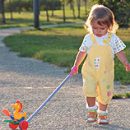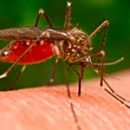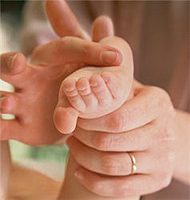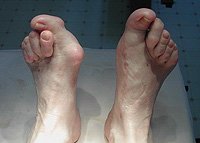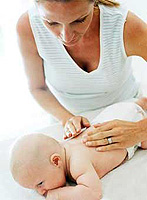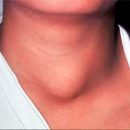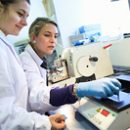What are the types of wounds? How to give first aid when a man's wound? Answers you will find in the article.
Content
What are the wounds
There are superficial and deep. With surfaces, the integrity of the skin and mucous membranes is disturbed, deeply accompanied by damage to vessels, nerves, bones, tendons. Wounds penetrating the cavity (abdominal, chest, cranknaya-brain) are called penetrating. Distinguish them depending on the nature of the wound object.
- Koloty occur when exposed to knife, bayonet, needles, sewed. Cheerful wounds are especially dangerous. Unnoticed damage to internal organs can cause internal bleeding, peritonitis and pneumothorax.
- Rezany Wounds can be applied to a sharp cutting subject (knife, razor, glass, scalpel). Such wounds have smooth, intact edges.
- Chilled wounds arise when applying damage to the sharp, but heavy item (ax, checker and others.) and often accompanied by damage to the bones.
- Harried wounds- The result of the impact of a stupid subject (hammer, stone and t.D.).
- Firear wounds. Depending on the type of projectile, the bullet wound is distinguished, fraction, fragmentary. A gunshot wound can be through when the wound has an inlet and outlet; blind if the object is stuck in the body; tangential when the subject caused superficial damage and it passed next to the authority, only partially his ass. Foreign bodies, remaining in the organ, cause its suppuration. Exchange wounds are often multiple and always determine extensive damage to the tissues: the uneven edges of the fragments are fond of clothing, earth, the skin, which increases the pollution of the wound.
Bleeding depends on the type of vessels damage (artery, vein, capillaries), blood pressure height and wound nature. When cut and chopped wounds, bleeding is most pronounced. In the well-metered tissues of the vessels crushed and thrombourned. So bruised wounds are little bleeding. Some exception is the wounds of the face and head. In their soft tissues there are extremely many capillary vessels, so any wound of the head is accompanied by significant bleeding.
First aid when
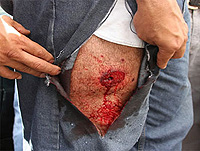 The reason for most deaths after injury is the sharp blood loss, so the first events should be directed to stopping bleeding in any possible way: harness, pressing the vessel, the pressing bandage, etc.
The reason for most deaths after injury is the sharp blood loss, so the first events should be directed to stopping bleeding in any possible way: harness, pressing the vessel, the pressing bandage, etc.
Wound protection against pollution and infection. Wound processing should be pure, better disinfected, hands. Do not touch the hands of those layers of gauze, which will directly touch the wound. In the presence of disinfectants (hydrogen peroxide, furaticiline solution, iodine tincture, alcohol, etc.), before you impose a aseptic bandage, it is necessary to rub the skin around the wound 2-3 times with a piece of gauze or cotton wool, moistened with an antiseptic, trying to remove the mud, scraps, ground from the skin surface.
Winal can not be washed with water - this contributes to infection. Can not be allowed to enter the migrational means directly to the wound. Alcohol, iodine tincture, gasoline cause death damaged cells, which contributes to the wound suppuration, and a sharp increase in pain, which is also undesirable. Foreign bodies and dirt from the deep layers of wound should not be removed, since it leads to even greater infection of the wound and may cause complications (bleeding, damage to organs).
The wound can not be filled with powders, put an ointment on it, it is impossible to apply your wool directly on the wound surface - all this contributes to the development of infection. Sometimes internal organs may fall into the wound (brain, intestines), tendon. When processing such a wound, you can not immerse the fallen bodies into the wounds, the bandage is applied on top of the authorities.
- First aid with wounds of soft head tissues. Due to the fact that the skull bones are located under soft tissues, the best way to temporarily stop bleeding is the imposition of the gag. Sometimes bleeding can be stopped with finger pressed artery (outdoor temporal - ahead of the ear shell, outdoor jaw - at the lower edge of the lower jaw, 1-2 cm from its angle). When heading the head is often simultaneously damage to the brain (concussion, bruised, compression). The wounded need to be put in a horizontal position, create peace, attach cold to the head, organize immediate transportation to the surgical hospital.
- Penetrating injuries of the chest Extremely dangerous, since they may be damaged by the heart, aorta, lungs, other vital organs. The most important thing, the air is beginning to penetrate into the pleural cavity and the open pneumothorax develops, with the result that the light fallshes, the heart displacement occurs and shock develops. The first help must know that the hermetic closure of such a wound can warn or significantly reduce the development of this difficult state. It is possible to reliably close the wound of the chest with a sticky plaster, applied in the form of a tile, or a rubberized wrapper from an individual package, can be thickly impregnated with vaseline gauze, use the oilcloth, film, impoverished by the type of grabbing. Anti-shock events are needed. Transport patients in a half-day position.
- Strite wound Extremely dangerous, even a small wound may bring formidable complications that require immediate operation - internal bleeding and the expiration of the intestinal content in the abdominal cavity with the subsequent development of purulent (cartoons) peritonitis. Fallen organs can not go to the abdominal cavity. After processing the skin around the wound on the fallen organs, they put the sterile gauze, on top of it and on the sides of the organs - a thick layer of wool and make a bandage bandage. You can close the towel, sheets, stitching edges with thread. Such wounded develops shock very quickly, so you need to carry out anti-deposit measures. With any injury in the stomach, it is prohibited to feed the victim, to ride, give medicine through the mouth, it accelerates the development of peritonitis. Transportation - in the position lying with a raised top of the body and with bent in your knees. Such a position reduces pain and warns the development of inflammation in all departments of the abdomen.
An important task of first aid is the wounded is the speedy delivery of them into a healing institution. The earlier the victim gets medical assistance, the more effective the treatment.

